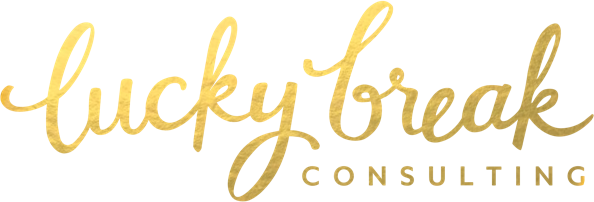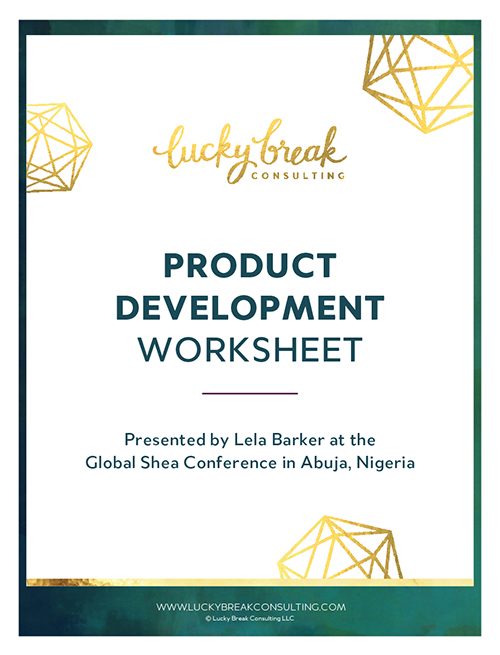As I mentioned in my previous post, I recently journeyed to West Africa to participate in the 2013 Global Shea Conference. Lucky Break Consulting was proud to be a contributor to this amazing event, designed to promote shea butter and empower African entrepreneurs. Funlayo and Shola Alabi of Shea Radiance orchestrated a series of small business trainings and I was excited to teach a product development workshop at their invitation. I spent several hours with sixty-five attendees (more than 90% of them women) as we discussed the art of bringing a product to market. Despite differences in geography, socioeconomics and language, we came together to share our wisdom. The energy in that room was electric!

My presentation was designed specifically for emerging African entrepreneurs interested in bringing finished cosmetic products to market. However, the product development process is a pretty universal affair, whether you’re selling in Mumbai, Mozambique or Montana. It applies to all types of finished good: cupcakes, legwarmers, earrings and lotion. The development process we implement as small businesses is a critical cog in the wheel of our sucess. My particular process was developed over the last decade as the founder of Bella Lucce. Ten years in, product development at my company has followed a consistent pattern, resulting in the successful launch of 130+ products both under our label and as branded goods for other companies you likely know and love. Our products are now offered in more than 1,000 spas and boutiques in thirty countries.
I’m sharing my process here, with the hope that it will prove useful for other creative entrepreneurs. At the bottom of this blog entry, I invite you to download my eight-page Product Development Worksheet as well.
Step 1: Develop your product concept.
Step 2: Define your sales channels.
Step 3: Design and test your product.
Step 4: Determine the appropriate packaging.
Step 5: Calculate your costs.
Step 6: Research other products.
Step 7: Adjust pricing and packaging if necessary.
Step 8: Finalize your marketing and messaging.
Step 9: Develop the label for your product.
Step 10: Obtain any necessary government approvals.
Step 11: Start selling your product!
Step 12: Develop wholesale terms and order forms.

Too often, creative entrepreneurs develop a product, then find their market. In my process, those steps are reversed: identifying your ideal client and target sales channels at the outset of your development process is critical, as those parameters inform every other product development decision you’ll make.
The worksheet linked below accompanied my visual presentation in Abuja. Though it’s clearly customized for an African audience, I believe there’s meat enough for entrepreneurs of all stripes. I’ve slimmed down a few steps and simplified the pricing model due to the constraints of the Abuja workshop, but the essence of product development is there. I hope you find it helpful. I’d love to hear about YOUR produce development process, too!

Download my Product Development Worksheet right here.






Thank you for the download. What an inspiring event you held in Africa! So exciting!
I appreciate the kind words. It was an awesome project and I am grateful for the opportunity to be a part of it!